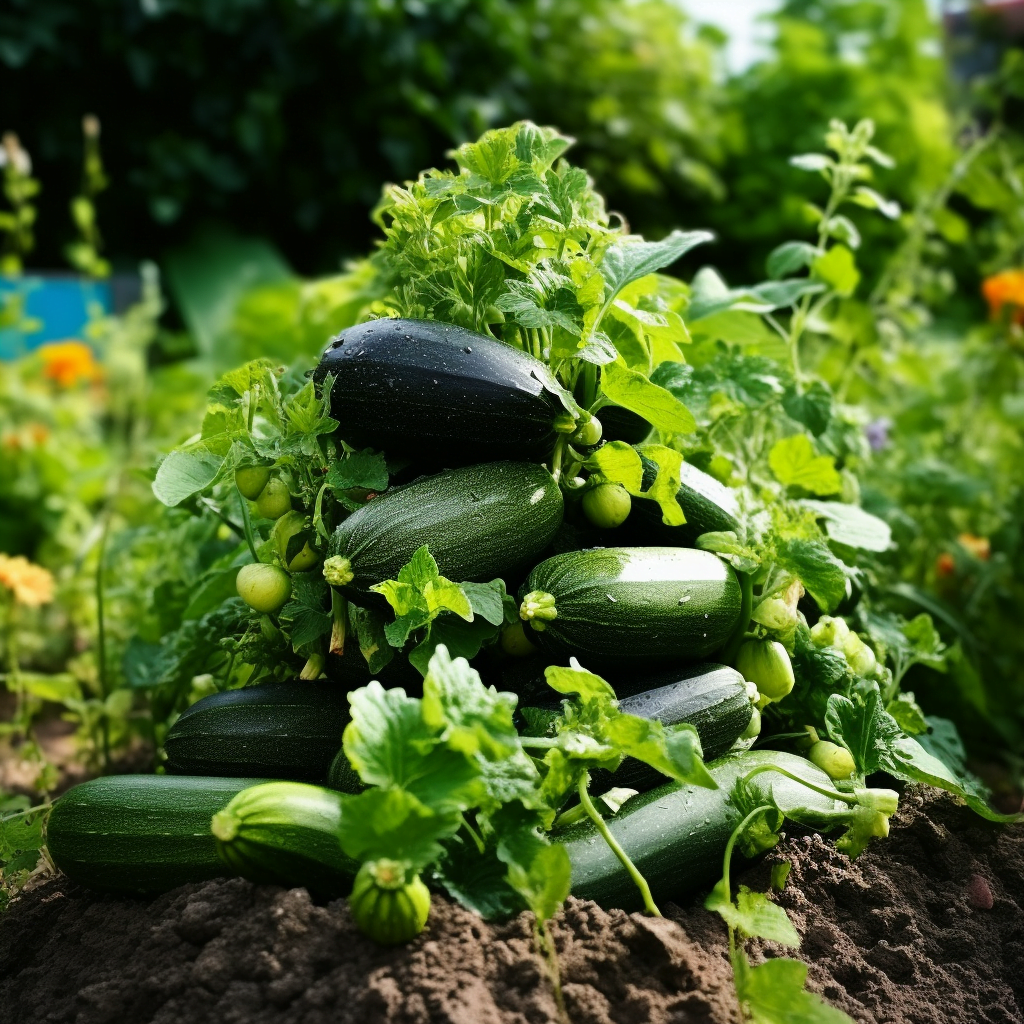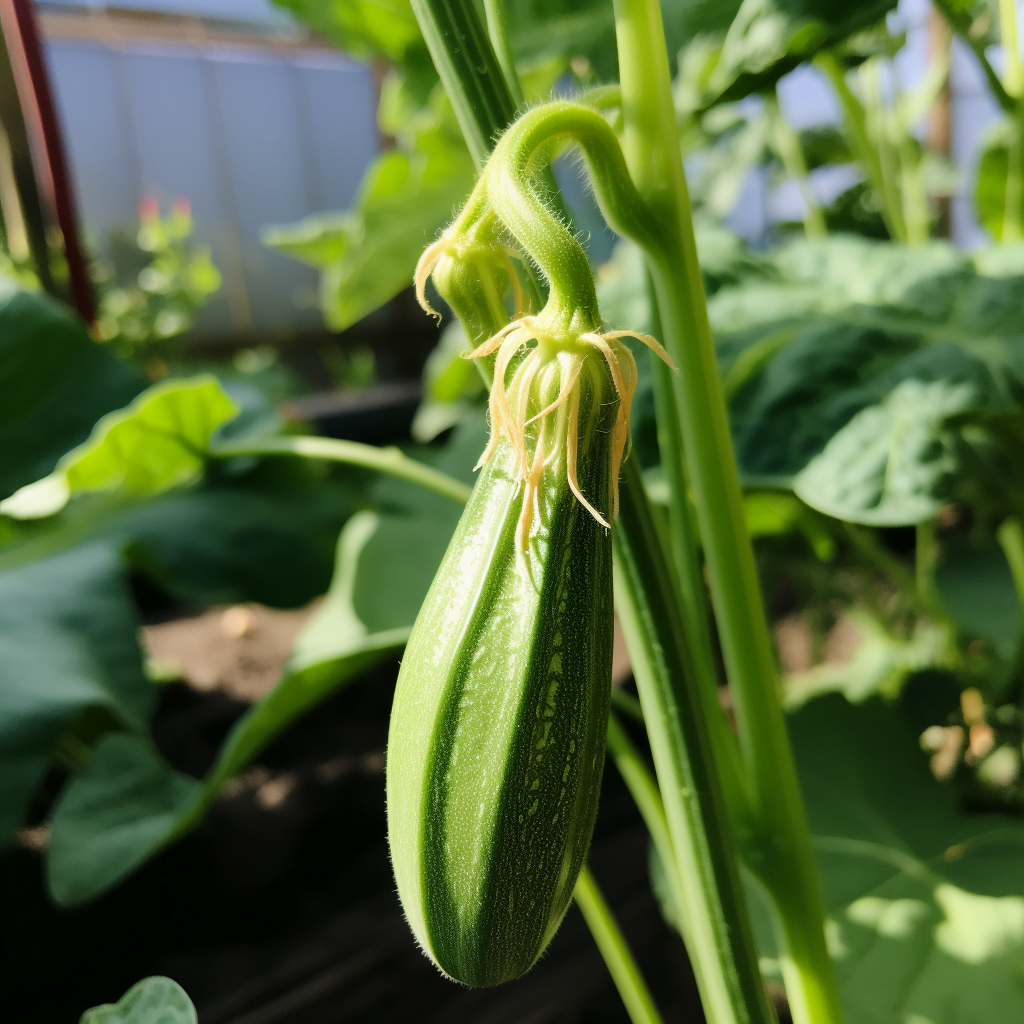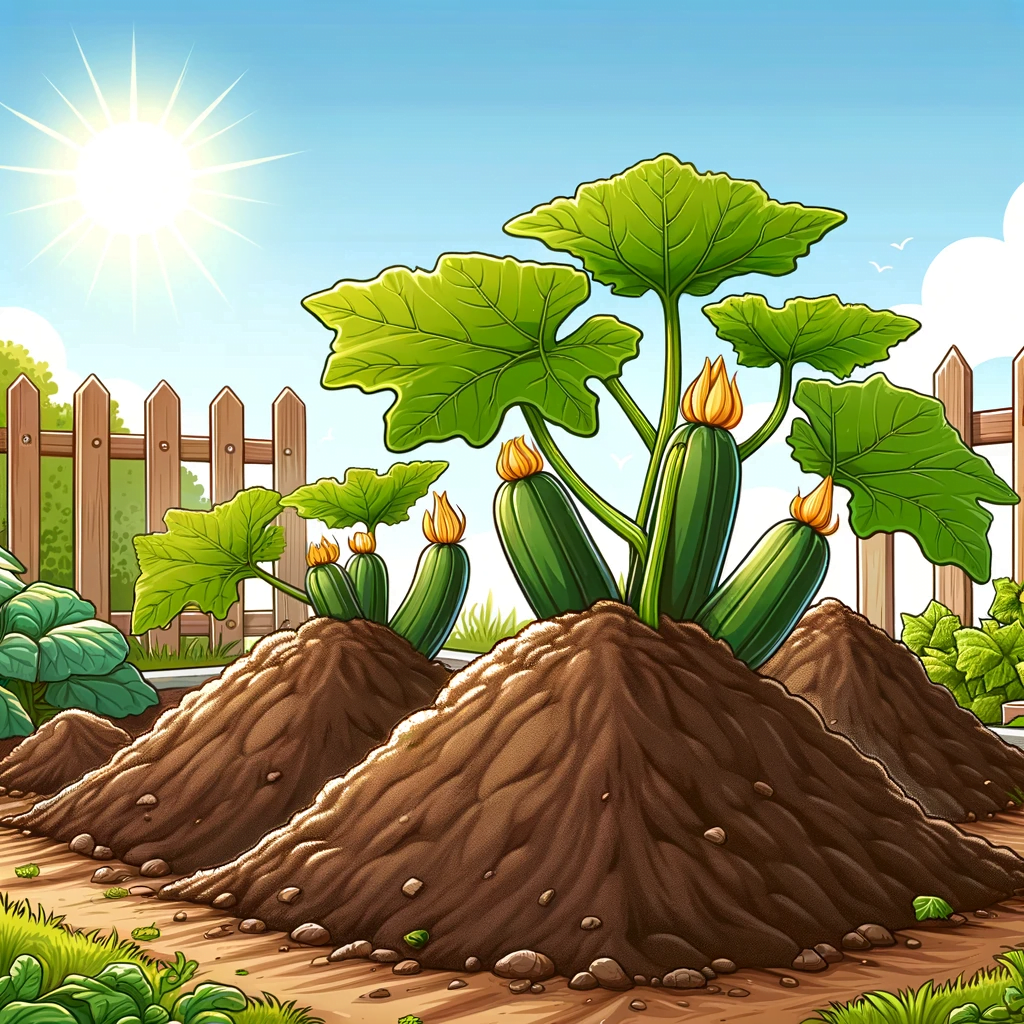Introduction
Zucchini is one of the most prolific and easy-to-grow vegetables for both beginning and experienced gardeners. With proper care and favorable conditions, zucchini plants can produce what seems like an endless bounty throughout the summer.
This fast-growing summer squash comes in many varieties – from traditional dark green types to golden zucchini, round or Italian varieties, and more. Zucchini can be grown as compact bush types or allowed to vine. With ample space and care, a single zucchini plant can supply a steady harvest for a whole family.
While zucchini isn’t too demanding, following some key tips will ensure your zucchini plants stay healthy and productive through the season. This comprehensive guide covers best practices for planting zucchini, from creating the right growing conditions to tips for maximizing pollination and dealing with common zucchini plant pests. Follow these tips and you’ll be harvesting more zucchini than you know what to do with.
Should Zucchini Be Planted on a Mound?
Unlike some vegetables that do fine planted in flat rows, zucchini really benefits from being planted on mounded or hilled soil.
What is hilling?
In gardening terms, “hilling” refers to creating mounds or raised piles of soil for planting rather than flat ground. The practice of hilling has been used for ages to improve drainage, warmth and other factors to help certain crops thrive.
Benefits of hilling zucchini:
- Improves drainage and reduces risk of fungus and rot issues – Zucchini plants are prone to fungal diseases if their roots and fruits stay wet for too long. Creating elevated mounds ensures excess moisture drains away quickly.
- Warms the soil which zucchini prefers – The raised shape allows more sunlight penetration to warm the soil, which zucchini needs to grow its best. Cool, compacted garden soil can stunt plants.
- Loosens soil for better root growth – The loosened, aerated soil in a mound enables roots to branch out deeply and easily access nutrients and moisture.
- Allows deeper root access to nutrients and water – With a mound’s improved drainage and loosened soil, zucchini roots can penetrate more deeply to draw up nutrients and water.
- Raises fruits off wet ground preventing rot – Wet soil is a recipe for rotten zucchini fruits resting on the ground. A mound raises them up above damp earth and puddles.
- Makes for easy harvesting without leaves obscuring fruits – With zucchini fruits lifted on a mound, you can spot and harvest them quicker without having to move aside leaves and vines.
- Provides vertical airflow to reduce disease – More airflow around zucchini plants on mounds means fewer moisture and pest issues.
Potential drawbacks of hilling:
- Takes more effort to build and maintain mounds – Creating good mounds does involve more digging, hauling and shaping of soil. Mounds also require maintenance like rebuilding after rain erosion.
- Can cause erosion if not contained properly – Exposed soil mounds can easily erode or deteriorate after heavy rains if sides aren’t gently sloped. Compaction or loss of shape impacts plants’ benefits.
- Takes up more space in the garden than flat planting – Hilled zucchini needs more space between mounds for air circulation and to accommodate their spread. This can limit total plants grown.
- May dry out faster and need more watering – With greater drainage and airflow, mounds can sometimes need more frequent watering to prevent plants drying out.
- Not necessary in already well-draining or sandy soils – Zucchini planted in loose, fast-draining soils won’t benefit as much from hilling techniques.
So in most cases, the benefits of creating planting mounds for zucchini outweigh the extra effort involved. But when is hilling most useful?

When Are Mounds Most Beneficial for Zucchini?
Planting zucchini on mounds gives them the best chance of success in these conditions:
- Heavy clay soils or those with poor drainage – Dense clay soils easily get waterlogged after rain or irrigation. Puddles and wetness suffocate zucchini roots and lead to rot. Mounding vastly improves drainage in clay.
- Cool, wet climates and regions – Zucchini grows best with consistent warmth. In cooler northern or perpetually damp climates, mounds help heat up and dry out the soil.
- Gardens prone to soil fungi and rot issues – Wet, compacted or heavy soils are a recipe for fungal issues in zucchini. Building up mounds aids essential drainage and airflow to prevent diseases.
- Early spring planting when soil needs warming – To get a head start on growing, some gardeners sow zucchini seeds in the cool spring. Mounding can help capture and retain more warmth for growth.
If your garden already has sandy, well-draining soil and a hot climate, flat planting may work fine. But for most gardens, creating optimal zucchini mounds makes a big difference.
How to Build the Best Zucchini Mounds
Constructing the right mounds will give your zucchini plants an advantage. Here are tips:
- Size: Make mounds 18-24 inches wide and 6 inches tall. This provides sufficient room for several plants while still being manageable to create and maintain.
- Shape: Round or linear shaped mounds hold their form well. Avoid sharp peaks which easily erode. Gently sloped dome shapes work best.
- Materials: Use rich soil amended with 2-3 inches of compost or fertilizer. The compost improves drainage while providing nutrients.
- Location: Plant mounds in full sun with good airflow. Zucchini needs at least 8 hours of direct sunlight daily.
- Construction: Gently slope sides rather than sharp edges so mounds hold their shape better after rain and irrigation. Firm soil gently but avoid heavy compacting.
- Spacing: Allow 3-4 feet between each mound for optimum air circulation and room to spread. More space reduces disease risks.
- Number: Plant 2-3 zucchini seeds or transplants per mound. Thin later to the strongest 1-2 plants. More plants leads to overcrowding.
Aim for consistently sized mounds spaced appropriately for good air circulation. Gently firm the mounds after shaping and water them well after planting zucchini seeds or transplants. Add a layer of mulch atop mounds to further discourage weeds and retain moisture while preventing soil compaction when watering.
5 Key Tips for Growing Great Zucchini
Follow these essential tips for keeping your zucchini plants happy and productive all season long:
1. Plant in Proper Hills
As discussed above, creating optimal soil mounds or “hills” provides zucchini plants the right drainage, warmth and support needed to thrive. Take the time to build suitable mounds before sowing or transplanting zucchini.
2. Monitor Pollination
Zucchini plants have both male and female flowers that require pollination for fruit set. The first blossoms will be male flowers – identify female flowers by the small zucchini fruits behind each flower. Since zucchini has so many blooms, plants often benefit from gardeners assisting with hand pollination.
Collect male pollen by removing a just-opened male flower. Pull off the petals to expose the center pollen-covered anther. Gently rub this pollen-laden anther inside the center of newly opened female flowers to pollinate. Making the rounds daily to hand pollinate flowers will greatly increase fruit production.
3. Don’t Plant Too Early
One of the biggest mistakes is sowing zucchini seeds or transplanting too early when soils and air are still cool. Zucchini quickly falls victim to frost damage and cold soil stunting growth. Wait until all danger of frost has passed and soil reaches at least 65°F before planting zucchini.
To get a head start, use season extending methods like cloches, cold frames or fabric row covers to protect young plants. Just be ready to uncover them as daytime temperatures exceed 80°F. Avoid plastic sheeting which overheats plants.
4. Try Succession Planting
Don’t sow all your zucchini seeds at once. A better method is succession planting where new patches of seeds are started every 2-3 weeks from spring through early summer. This ensures zucchini plants reach peak production at different times for continuous harvests. It prevents weather or pest damage to one planting from halting harvests.
Stagger seed sowing or transplant dates and carefully record them. Choose disease-resistant or improved zucchini varieties when re-planting to avoid problems plaguing earlier plantings. With smart succession planting, enjoy harvests all season.
5. Prevent Squash Borers
Squash borers are one of the most destructive zucchini pests. These larvae tunnel and feed inside vines, ultimately killing the plant. To prevent infestations:
- Use floating fabric row covers early before borers arrive to exclude the adult moths from laying eggs. Remove at bloom time for pollination.
- Apply beneficial nematodes to soil to parasitize borer larvae. Make several applications from transplant through bloom stage.
- mound soil or mulch around the base of zucchini stems to discourage borers from laying eggs.
- Check young stems for small holes surrounded by moist sawdust-like material. Slit stems there to remove and kill any borers found before they multiply.
- Destory heavily infested plants well away from garden to prevent spread.
- Plant extra zucchini 2-3 weeks later as backup in case some plants are lost to borers.
- Intercrop with strongly scented plants like onion, garlic or marigolds which repel borers.
- Use trap crops by planting early squash as a sacrifice the moths prefer before your zucchini.
Stay vigilent for signs of squash borers and be prepared to employ various organic methods to protect your zucchini plants.
Other Tips for Growing Great Zucchini
- Start seeds indoors: Get a head start on the season by sowing seeds indoors 4 weeks before your last frost. Choose individual biodegradable pots over flats.
- Provide support: Install trellises, cages or poles for vining varieties to grow vertically and produce straighter fruits.
- Water at soil level: Avoid wetting leaves which can cause powdery mildew. Use drip irrigation or soaker hoses.
- Use reflective mulch: Silver plastic mulch repels aphids and other pests while deterring weeds. Organic mulches like straw retain moisture and suppress weeds.
- Fertilize carefully: Over-fertilization causes excess foliage rather than fruits. Apply a balanced organic fertilizer when plants begin blooming.
- Harvest frequently: Pick zucchini when 6-8 inches long for best flavor and production. Leaving fruits causes decline.
- Eat the blossoms: Zucchini flowers are edible. Pick male flowers early in the morning and enjoy fried or stuffed blossoms as a treat.

Common Zucchini Plant Problems and Solutions
Growing a healthy, productive zucchini crop relies on preventing or quickly addressing any issues that arise. Here are solutions to the most frequent zucchini problems:
Poor Germination
- Cause: Soil too cold, seed too old, improper planting depth
- Solution: Wait for soil at least 65°F. Use fresh seed. Plant 1″ deep.
Leaves Curled, Stunted Plants
- Cause: Aphids, Cucumber Beetles, Squash Bug feeding damage
- Solution: Use row cover protection. Apply insecticidal soap or neem oil.
Flowers or Fruits Rotting
- Cause: Blossom End Rot from low calcium. Other fungal rots.
- Solution: Address calcium deficiency in soil. Improve drainage. Allow soil to dry between watering.
Mildew on Leaves
- Cause: Powdery mildew fungal disease
- Solution: Improve airflow. Avoid wetting foliage. Apply neem oil or sulfur dust.
Plants Wilting
- Cause: Bacterial wilt disease. Squash vine borer damage.
- Solution: Use preventive measures listed above. Control cucumber beetles which spread disease. Wrap stems with aluminum foil to deter borers.
Poor Fruit Set
- Cause: Inadequate pollination. Excess nitrogen fertilizer.
- Solution: Hand pollinate flowers. Reduce high-nitrogen fertilizer which promotes foliage over fruits.
Conclusion
When provided with suitable growing conditions, rich soil, and proper care, zucchini is one of the easiest and most prolific vegetables you can grow. The abundance of blossoms and rapid growth make zucchini a great choice for gardeners of all skill levels. Plant a few different varieties to discover your favorite flavors.
Follow the tips in this guide on creating the optimal mounded planting site, maximizing pollination, using season extension and succession planting, and managing pests organically. Apply these practices for a healthy, high-yielding zucchini crop. Enjoy harvests all season long and zucchini’s versatility in the kitchen. Your friends and family may be begging you to stop bringing them your bountiful zucchini harvest.
So get ready for an ample supply of this popular summer squash. With the right gardening methods, you’ll have more zucchinis than you know what to do with in no time!



